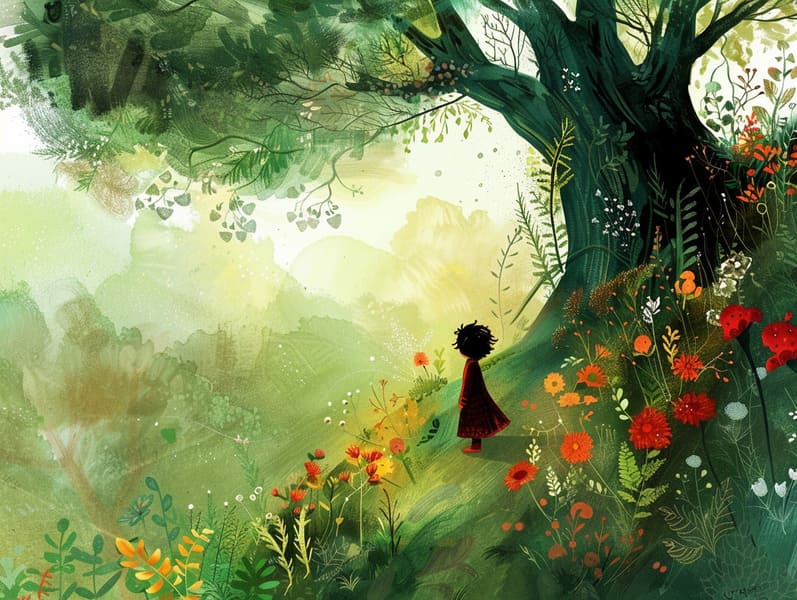The Genesis of Traditional Fairy Tales and Their Ageless Attraction.
The Genesis of Traditional Fairy Tales and Their Ageless Attraction.
Blog Article

Vintage fairy tales have timeless appeal. These stories have been told from one generation to the next well before they were ever published. They arose from a variety of societies, including Eastern traditions. They were initially told among older generations, often carrying themes and messages relevant to the societal norms and beliefs of the time.
Jacob and Wilhelm Grimm, the two Grimm brothers, were among the first to compile and release many of these beloved tales. Their anthology, "Grimm's Fairy Stories," included stories like "The Little Glass Slipper," "Hansel and Grethel," and "Little Snow White," which have since become mainstays in the world of timeless fairy tales. Similarly, Hans Andersen's whimsical tales, such as "The Mermaid's Tale," and "The Little Duckling," have stolen hearts worldwide, cementing their place in the pantheon of famous fairy tales.
Despite being ancient, these stories remain as important as ever, especially as bedtime stories for kids. These fantastical tales are now available in diverse formats, including beautifully illustrated books, whimsical animations, and internet fairy tales.
Their enduring popularity can be traced to several charming aspects:
Ethical Lessons: Classic fairy tales often whisper important moral lessons. Narratives like "The Wolf and the Liar" teach the value of integrity, while "The Tale of the Tortoise and the Hare" illustrate the traits of tenacity and unassuming nature. These tales offer young readers clear distinctions between moral and immoral, helping to shape their moral compass in a tender yet impactful way.
Warmth and Understanding: Old fairy tales frequently portray heroines facing obstacles and hardships, urging readers to comprehend with their struggles and celebrate their triumphs. For instance, "The Tale of Beauty and the Beast" illustrates the virtue of valuing inner qualities to recognize the true character of a character, cultivating sympathy and awareness.
Cultural Recognition: Many ancient fairy tales are rooted in the cultural contexts from which they blossomed. Immersing in these fairy tales can provide delightful insights into different beliefs, encouraging a sense of international awareness and perception.
Imagination and Creativity: The enchanted elements in traditional fairy tales—mythical entities—motivate children’s dreaming abilities. These stories carry readers to otherworldly realms, promoting creative ideas and a sense of excitement that remains a lifetime.
Ancient fairy tales are not only delightful but also pedagogical. They work as fantastical tools in nurturing various brain and heart skills in kids. When fairy tales are recited, they promote language skills by offering new lexicon and detailed sentence structures. This practice also boosts auditory perception and attentiveness, as little ones hang on every word, excited to see what happens next.
Furthermore, discussing the themes and characters of fairy tales can sharpen thinking skills and cognitive skills. The young are shown to identify more info patterns, predict happenings, and grasp cause and effect. These talks also help children say their thoughts and feelings, adding to their emotional intelligence.
In today’s digital age, the prevalence of digital fairy tales has made these narratives more reachable than ever. Web platforms and mobile apps share comprehensive collections of old fairy tales that can be read or heard anytime, anywhere. Fairy tales narrated are particularly prevalent, offering an enjoyable way for kids to take part in these captivating stories. Voice books and read-to-me stories take characters and settings to life, often paired with delightful sound effects and songs that elevate the tale journey.
The everlasting appeal of old fairy tales lies in their ability to adjust to new eras while staying true to their main lessons. Contemporary updates of these fairy tales often spotlight more multicultural figures and modern settings, making them relatable to today’s audience. However, the underlying themes of valour, understanding, and rightness remain unchanged, continuing to resonate with kids of all ages.
Fairy tales also offer a sense of assurance and closeness. They make available a coherent narrative with a unmistakable beginning, middle, and end, often ending with the wrap-up of conflicts and the triumph of morality over wickedness. This assuredness can be relieving for kids, imparting a sense of solidity in an ever-changing world.
Old fairy tales continue to mesmerize and inform new generations, maintaining their majesty and applicability in modern society. As bedtime stories for kids, they share a perfect blend of enchantment and education, cultivating moral values, empathy, and creativity. The accessibility of web-based fairy tales and the likability of fairy tales narrated make sure that these traditional stories remain attainable to new generations.
By conserving and relating these narratives, we continue to celebrate the rich tapestry of legends and cultural heritage. Whether you are viewing a gorgeously illustrated book, seeing a internet collection, or playing an audio story, the wonder of ancient fairy tales is always within reach. These stories reveal of the lasting essence of stories and its ability to unite us across generations and cultures.
Even if you are discovering a beautifully illustrated book, discovering a web-based library, or listening via an sound book, the spell of timeless fairy tales is always within reach.
These fairy tales illustrate of the undying influence of tales and its ability to draw us together across generations and cultures, forging a link that charms and informs alike.